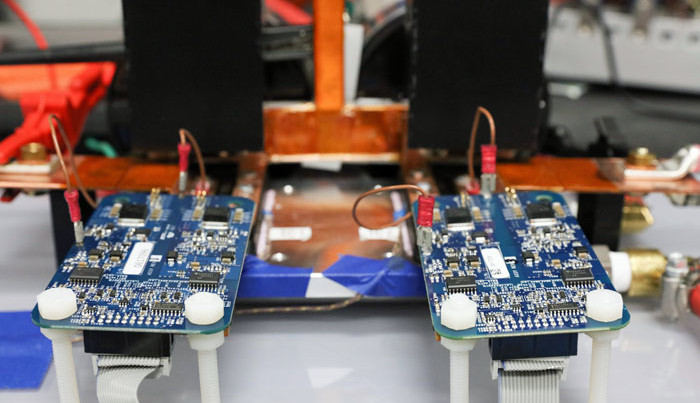120 kW inductive charger for electric vehicles boasts 97% efficiency
October 29, 2018
on
on

Following on from their 20 kW wireless induction charging system for vehicles rolled out a couple of years ago, researchers from the US Department of Energy’s Oak Ridge National Laboratory (ORNL) have now demonstrated a 120 kW version able to transfer power between two coils separated by a six inch (150mm) gap with a claimed efficiency of 97%. Using this technology it should eventually be possible to transfer enough power to recharge the drive battery of an electric vehicle in the same sort of time it takes to fill the tank of a conventional gas-guzzler.
The claimed efficiency of the system is really quite remarkable and not significantly worse than conventional high performance rapid charging systems which rely on cables and connectors.
The researchers at ORNL had previously designed the world's first 20 kW inductive charging system for commercial electric vans. This latest higher-power system should occupy the same or smaller footprint to encourage commercial take-up. New analysis methods have been used to simulate and optimize the coil design to ensure that energy losses are reduced and heating effects are minimized. The electronics rely on silicon carbide power semiconductors to produce a system that is both lightweight and compact. This latest system is another step towards the US DOE’s goal to develop a system capable of transferring 350 to 400 kW, thereby reducing vehicle charge times down to around 15 minutes.
The research at ORNL is ongoing and they are currently investigating a system capable of transferring 200 kW, the next step will be a 350 kW version. Also under investigation are dynamic charging methods using coils embedded in the road surface to transfer power directly to pickup coils in vehicles passing overhead at normal road speeds.
The claimed efficiency of the system is really quite remarkable and not significantly worse than conventional high performance rapid charging systems which rely on cables and connectors.
The researchers at ORNL had previously designed the world's first 20 kW inductive charging system for commercial electric vans. This latest higher-power system should occupy the same or smaller footprint to encourage commercial take-up. New analysis methods have been used to simulate and optimize the coil design to ensure that energy losses are reduced and heating effects are minimized. The electronics rely on silicon carbide power semiconductors to produce a system that is both lightweight and compact. This latest system is another step towards the US DOE’s goal to develop a system capable of transferring 350 to 400 kW, thereby reducing vehicle charge times down to around 15 minutes.
The research at ORNL is ongoing and they are currently investigating a system capable of transferring 200 kW, the next step will be a 350 kW version. Also under investigation are dynamic charging methods using coils embedded in the road surface to transfer power directly to pickup coils in vehicles passing overhead at normal road speeds.
Read full article
Hide full article


Discussion (4 comments)